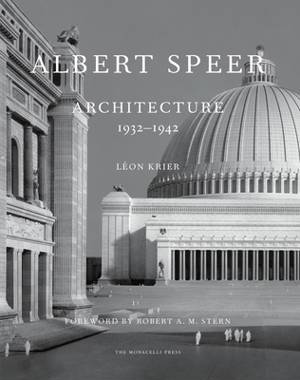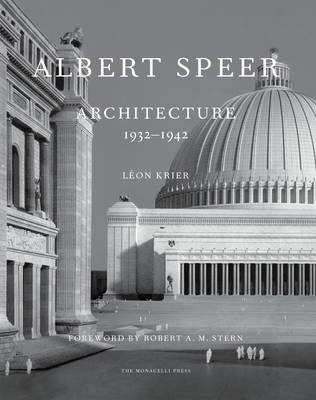
- Afhalen na 1 uur in een winkel met voorraad
- Gratis thuislevering in België vanaf € 30
- Ruim aanbod met 7 miljoen producten
- Afhalen na 1 uur in een winkel met voorraad
- Gratis thuislevering in België vanaf € 30
- Ruim aanbod met 7 miljoen producten
Zoeken
Omschrijving
Author Leon Krier asks, "Can a war criminal be a great artist?" To answer affirmatively, Krier shows that Albert Speer, Adolf Hitler's architect of choice, is responsible for one of the boldest architectural and urban oeuvres of modern times. Krier bases his study of this seminal classical designer on a series of interviews with Speer. The projects presented center on Speer's plan for Berlin, an unprecedented modernization of the city intended to be the capital of Europe. In addition to the urban plan, Speer designed buildings for major institutions and agencies, including the monumental Great Hall, Hitler's Palace, the High Command of the Armed Forces, the New Chancellery, and the Triumphal Arch. Illustrations are drawn primarily from Speer's personal archivethis facsimile edition, Krier candidly confronts the great difficulty of disentangling the architecture and urbanism of Albert Speer from its political intentions. This difficulty notwithstanding, Krier's presentation is an important contribution to the study of classicism in architecture and architecture in affairs of state.
Specificaties
Betrokkenen
- Auteur(s):
- Uitgeverij:
Inhoud
- Aantal bladzijden:
- 272
- Taal:
- Engels
Eigenschappen
- Productcode (EAN):
- 9781580933544
- Verschijningsdatum:
- 15/02/2013
- Uitvoering:
- Hardcover
- Afmetingen:
- 251 mm x 318 mm
- Gewicht:
- 2218 g

Alleen bij Standaard Boekhandel
+ 167 punten op je klantenkaart van Standaard Boekhandel
Beoordelingen
We publiceren alleen reviews die voldoen aan de voorwaarden voor reviews. Bekijk onze voorwaarden voor reviews.











